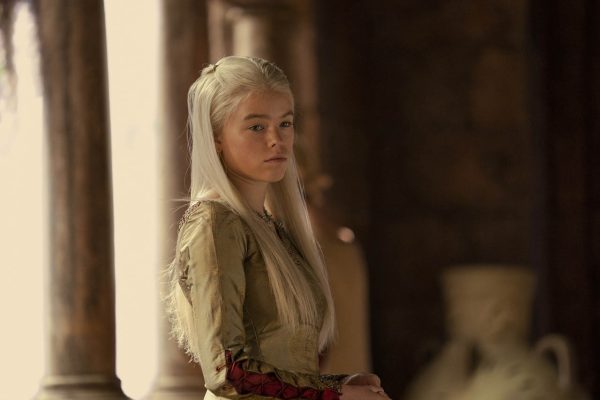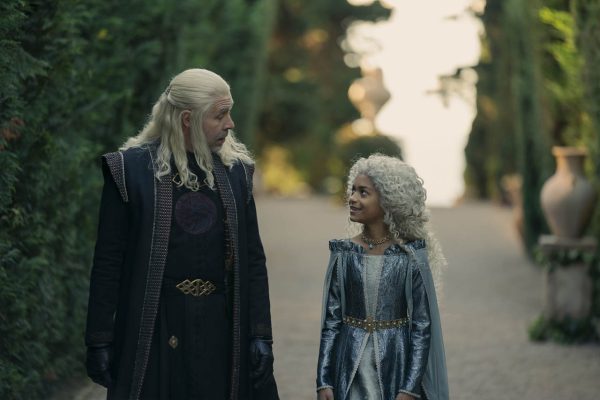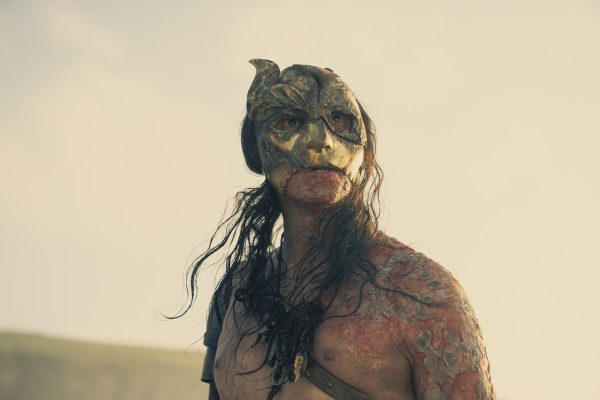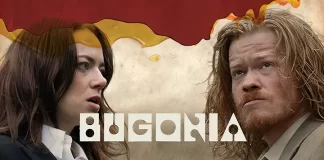
Full spoiler warning for Episodes 1-2, and potential spoilers for Episode 3.
House of the Dragon debuted last week with a robust and streamlined premier, one that recaptured the highly compelling political intrigue of its predecessor show’s prime, while still boasting an exceptional quality of production and direction. Closing out on King Viserys Targaryen having named Rhaenyra as his heir to the Iron Throne, Heirs of the Dragon felt more than anything like the ‘game board’ being reset. The ‘Game’ was the same, the goals and rules were mostly the same, now with a new roster of silver-haired players in place of their Stark and Lannister counterparts.
Now, with The Rogue Prince, HotD is swiftly settling into the familiar atmosphere of political intrigue and high-fantasy drama, right down to the anticipated new credit sequence reusing the Thrones theme as an overture – much to my admitted disappointment. The key features that are keeping the show feeling like an exact replica of its predecessor (for the moment) are the tighter character roster and – in line with the historical-text writing style of Fire and Blood – a more summative approach to depicting key events in this chronology. This brings out both the stronger and weaker elements of The Rogue Prince. On the one hand, the highly compelling character studies of Viserys and Rhaenyra – and the explicit themes of gender roles therein – are given plenty of interesting material to continue their respective arcs. On the other hand, there is a greater emphasis on expository dialogue for numerous scenes that lacks a certain flourish that made the premier, and Thrones before it, so engaging in episodes that did not need to feature a prominent action set piece.
Regardless of the larger faults of the episode, the evolving dynamic between Viserys and Rhaenyra remains the highlight of The Rogue Prince. Jumping forward 6 months after the lords of Westeros swore their loyalty to Viserys’ convention-denying proclamation, it is quickly demonstrated how Rhaenyra is still being curtailed in a passive role as cupbearer for her father’s small council. Milly Alcock does an impressive task of conveying the increasing frustration that accompanies the skeptical and patronizing voices that surround her. This is punctuated in the strongest scene of the episode between Rhaenyra and Rhaenys – the Queen who never was – their sharp dialogue lambasting the entrenchment of patriarchal values. As Rhaenys concludes, the conversation between the two slighted princesses affirms how Viserys is just another perpetrator of those values.

Just as the injustice of stripping Aemma of her agency and humanity in the premier highlighted the raging hypocrisies of Westeros’ gender politics, The Rogue Prince carries on this theme. As Viserys once again pays little attention to his daughter, he becomes fixated on securing his lineage, this time under the pretense of settling growing tensions with Corlys Velaryon and improving perceptions of his soft-willed reign. Viserys is offered the hand of Corlys’ 12-year-old daughter in marriage, only for the final scene to reveal he has decided to wed 15-year-old Alicent Hightower. The (rightful) discomfort Viserys shares with young Laena Velaryon, as she painfully recites her father’s rhetoric, works very well to highlight the innate absurdity of later deciding to marry Alicent.
Despite Viserys’ claims the prospect of remarriage had not occurred to him, he still feels comfortable declaring his betrothal to Alicent despite being provided no political reason to slight Velaryon’s proud house. While the ominous tendrils of Otto Hightower’s manipulation remain ever present, it is easier to read Alicent in this episode as a girl who finds solace in providing comfort to a man suffering a similar grief that she did. The repeated motif of her nervously scratching her fingernails underpins her discomfort when Viserys continually interprets her kindness for romantic attraction. Regardless of Alicent’s motivation, the message is the same: while he passively allows his council to influence his political decisions, he continually asserts his emotional decisions at the cost of side-lining those of the women around him, opting to be complicit in robbing a 15-year-old of her agency as the solution to doing the same thing to a 12-year-old. The subtext of these scenes goes a long way to elevate The Rogue Prince.

Structurally, the episode appears to be emblematic of the way Condal and team are approaching the adaptation process from Fire and Blood. Where Thrones had a rich collection of sharp dialogue and complex character perspectives to translate onto the screen, Fire and Blood is a fictional history of the Targeryen line, approaching the centuries-long chronology in broad strokes, focusing more on the essential players and events. This is likely the reason why there are more time jumps between episodes in HotD that are executed far more naturally than they were in the latter days of Thrones. While that is not exactly a high bar to clear, I am trepidatious that the pace of Fire and Blood’s chronology will take HotD’s focus away from the smaller, sometimes minuscule interactions between characters that made for some of Thrones’ best moments. This hurts in several scenes where there is a notable prevalence of expository dialogue, catching audiences up on events that have occurred in the time since the previous episode, as well as describing events that are occurring off-screen. Daemon’s role in this episode is most significantly impacted by this. After Matt Smith imbued a lot of pathos to Daemon’s quieter moments in the premiere, he now assumes a periphery role for much of The Rogue Prince (ironic, given the episode is named after him). His lasting resentment over Rhaenyra’s succession culminates in him stealing an unhatched dragon egg. Until Otto and the Kingsguard travel to Dragonstone to confront him after 2/3 of the episode has passed, his actions and reactions to events are conveyed through Viserys’ small council describing them, which feels very underwhelming given how compelling Smith’s performance has been thus far.
There will be yet another jump forward in time to next week’s episode to the point when, as the preview has revealed, Alicent will have already delivered her first child for Viserys. There is also a tease of the series’ first major battle sequence as Daemon forms a testy alliance with Corlys to deal with the ‘Crabfeeder’ – a pirate whose gnarly handiwork we are teased within a handful of opening shots. In Fire and Blood, this conflict spans a considerable length of time, while its immediate impact on Westerosi politics is largely peripheral: comparable to the Greyjoy’s invasion of the North in Season 2 of Thrones. I am particularly interested to see if and how the creative team decide to flesh out this part of the chronology. Whether the pace remains constant or allows more breathing room for developing these characters further, this will be one of the determining factors in how far HotD will come to matching the prime of its predecessor.














I love this film, very interesting.
film? this a series spammer.